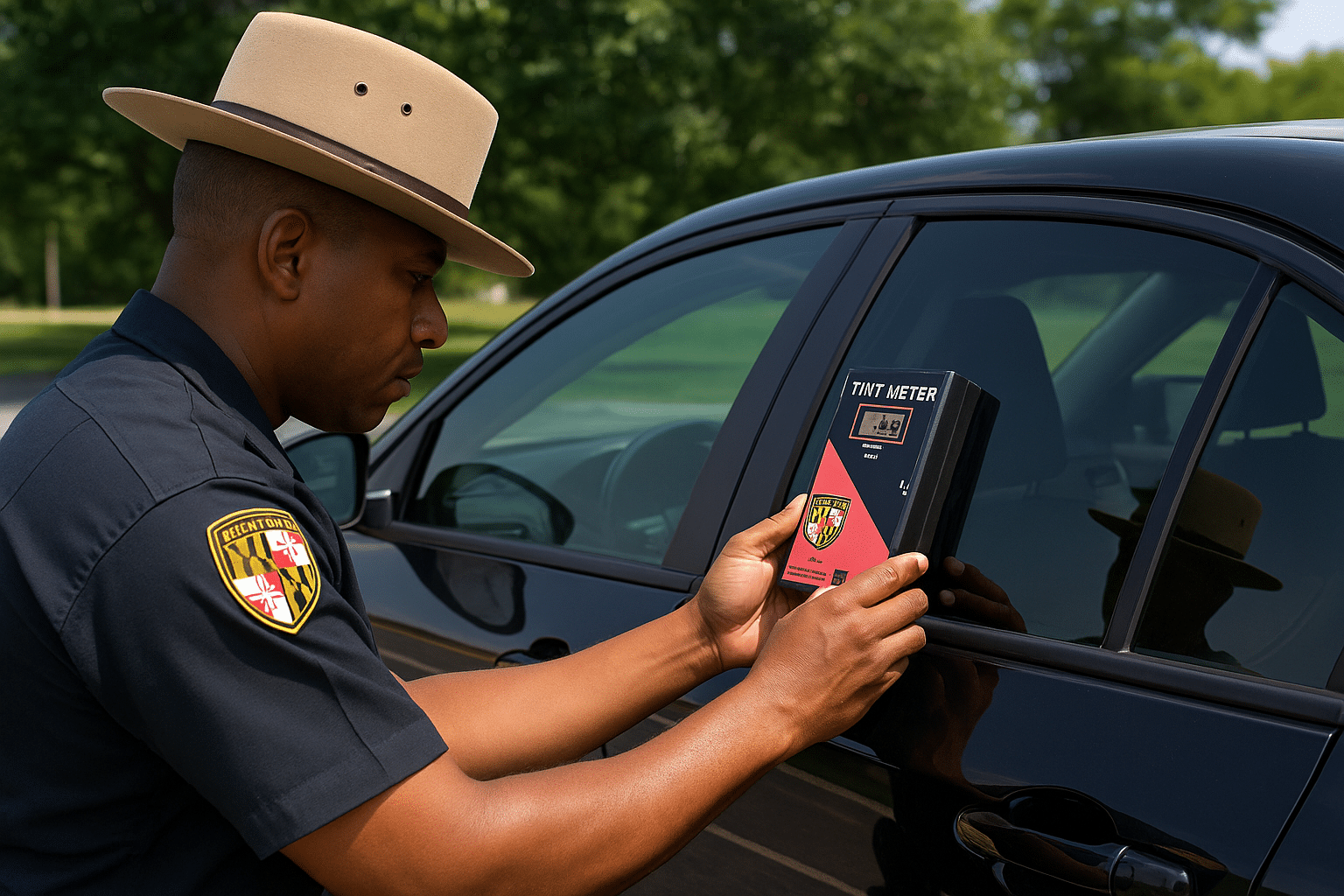
If you’re thinking about tinting your car windows in Maryland, you should know that the state has some of the strictest window tint laws in the region. Whether you’re in Prince George’s, Charles, Calvert, or St. Mary’s County, getting the wrong tint can lead to expensive tickets, repair orders, and even points on your license in some cases. Understanding the rules—and the penalties for breaking them—can help you avoid trouble.
Maryland’s Window Tint Laws
In Maryland, the rules for window tint are set by Maryland Transportation Code § 22-406. The law limits how dark or reflective your tint can be, measured by Visible Light Transmission (VLT)—the percentage of light that can pass through your windows.
Here’s a quick breakdown:
- Windshield: No tint allowed below the AS-1 line (the manufacturer’s mark near the top of the windshield). Non-reflective tint is allowed above this line.
- Front Side Windows: Must allow at least 35% of light to pass through (35% VLT or higher).
- Rear Side Windows: Must also allow at least 35% VLT.
- Rear Window: At least 35% VLT, unless you have side mirrors on both sides of the vehicle.
Reflectivity Rules: Maryland prohibits any mirrored or metallic appearance on window tint.
Exemptions: Certain medical conditions may qualify you for a darker tint exemption, but you must carry a doctor’s certification and have the tint tested and approved by the Maryland State Police.
Penalties for Illegal Tint in Maryland
If your tint is too dark, you could face:
- Repair Order: You’ll be required to remove or replace the illegal tint within a set period.
- Fines: Typically $70–$250 per violation, depending on the officer’s discretion and whether it’s a repeat offense.
- Inspection Failure: Your car can fail its Maryland Safety Inspection if the tint doesn’t meet the legal standard.
- Police Testing: Law enforcement uses tint meters to measure your VLT on the spot. If you refuse testing, it may be treated as a violation.
In Southern Maryland, especially in counties like Charles and St. Mary’s, law enforcement routinely conducts traffic stops for suspected illegal tint, often citing it as a secondary reason after another alleged violation.
How to Check if Your Tint Is Legal
The easiest way to stay compliant is to request documentation from your tint installer showing the exact VLT percentage. If you bought a used vehicle, you can have the tint tested at many inspection stations or by the Maryland State Police.
Pro tip: Just because a tint is labeled “35%” doesn’t guarantee it’s legal. Factory glass often has a slight tint already, and adding aftermarket film can lower the VLT below the legal limit.
Why This Law Exists
Maryland’s window tint laws are designed to balance personal privacy and vehicle safety. Excessively dark tint can make it difficult for law enforcement to see inside a vehicle, and it can reduce driver visibility—especially at night or during bad weather. The 35% VLT rule aims to reduce accidents while still allowing drivers to enjoy the benefits of tint.
Fighting a Legal Tint Ticket
If you’ve been cited for an illegal tint violation, you may have defenses. These can include:
- Proving the tint meets Maryland’s legal limit through certified testing
- Presenting valid medical exemptions
- Challenging the officer’s testing method or device calibration
As a Southern Maryland criminal defense lawyer, I’ve helped clients in Prince George’s, Charles, Calvert, and St. Mary’s Counties get tint tickets dismissed or reduced. Every case is different, and an experienced attorney can review your situation to determine the best defense.
Bottom Line
Before you spend money on window tint in Maryland, know the rules. Stick with at least 35% VLT on side and rear windows, avoid reflective film, and keep your windshield tint above the AS-1 line. If you’ve already been ticketed for illegal tint, you have options to fight it.
If you’re facing a tint violation or any traffic-related charge in Southern Maryland, contact Southern Maryland Criminal Defense today for a consultation. We defend clients in Prince George’s, Charles, Calvert, and St. Mary’s Counties and can help protect your driving record.
